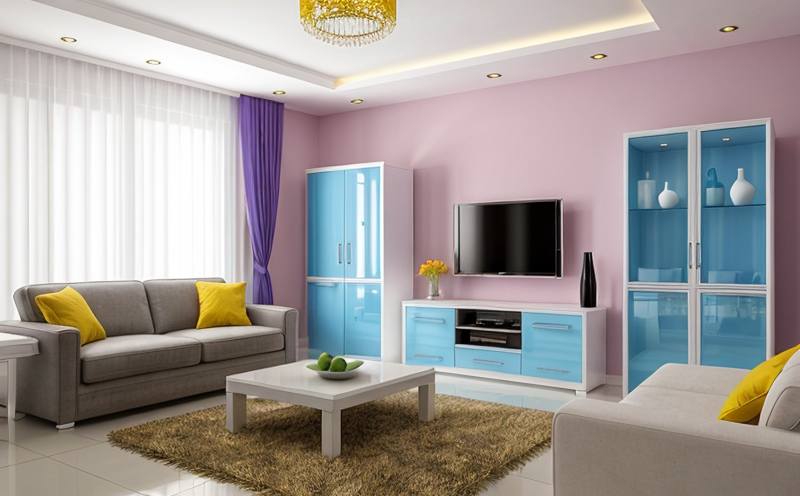ISO 899 Creep Testing of Decorative Plastics
The ISO 899-1 standard specifies the procedure for determining the creep strain under load at constant temperature. This test is critical for ensuring that decorative plastics used in home furnishings and interior design meet durability expectations over time and under stress. The test involves subjecting a specimen of the plastic to a specified load at a specific temperature, measuring its deformation over time as it gradually deforms due to the sustained force.
Creep testing helps manufacturers understand how their products will perform in real-world conditions, where materials are often subjected to continuous stress. By conducting this test, companies can ensure that decorative plastics do not exhibit unacceptable levels of creep or permanent deformation, which could lead to aesthetic defects and reduced product life. This is particularly important for surfaces like flooring, countertops, and wall coverings.
The specimen preparation involves cutting the decorative plastic into a standard shape, typically an 80 mm by 15 mm rectangular bar with a thickness of approximately 3 mm. The test requires precise measurement and handling to ensure accurate results. Once prepared, the specimens are clamped between two grips on a testing machine that applies a specified load.
The temperature is controlled according to ISO 899-1 requirements, which might range from room temperature up to 100°C depending on the plastic’s intended use and expected operating conditions. The test duration can vary widely, often lasting several days or even weeks, depending on the desired creep strain level.
The results are analyzed by comparing the measured deformation with the standard values provided in ISO 899-1. Compliance ensures that decorative plastics meet industry standards for durability and performance, which is crucial for maintaining product integrity over time.
| Parameter | Description |
|---|---|
| Temperature Range | Room temperature to 100°C, depending on the plastic type. |
| Load Applied | Standardized load based on the specimen size and expected use. |
| Testing Duration | Varies, often several days to weeks for significant creep strain. |
Industry Applications
This test is particularly relevant in the home decoration plastics sector. Decorative plastics used in flooring, countertops, and wall coverings are subjected to continuous stress from foot traffic, temperature fluctuations, and environmental exposure. The ISO 899-1 creep testing ensures that these materials maintain their aesthetic appeal and functional integrity over time.
- Home decor plastic flooring
- Ceramic and porcelain tile backing boards (decorative)
- Wallcoverings
- Countertops in kitchens and bathrooms
Environmental and Sustainability Contributions
The ISO 899-1 test contributes to the sustainability efforts by ensuring that decorative plastics used in home furnishings are durable enough to withstand environmental conditions without degrading. This reduces waste, as products do not need to be replaced prematurely due to material failure.
By adhering to these standards, manufacturers can produce more sustainable products that have a longer lifespan, thus reducing the overall carbon footprint associated with frequent product replacement and disposal. Additionally, this ensures compliance with environmental regulations and helps promote eco-friendly practices in the home decoration sector.
Competitive Advantage and Market Impact
- Prioritizes durability over time under stress
- Ensures compliance with international standards, enhancing product credibility
- Reduces the risk of early product failure, increasing customer satisfaction
- Maintains aesthetic appeal and functional integrity in demanding environments





